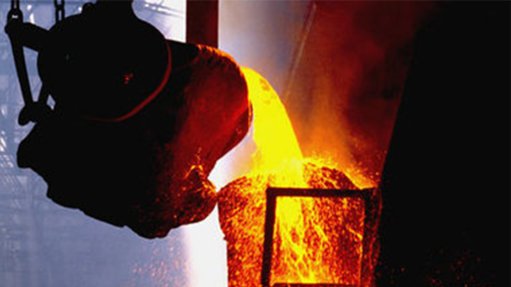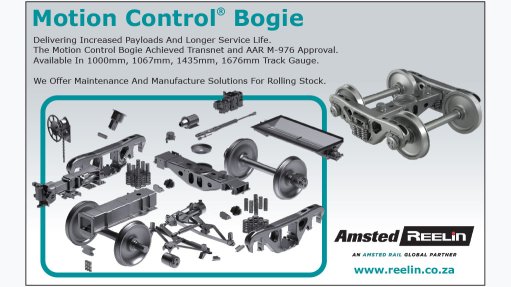Interlinking the supply chain with blockchain technology
This article has been supplied.
By Johan Potgieter, Cluster Industrial Software Lead at Schneider Electric
Blockchain technology goes by many names; game-changer, disruptive, futuristic and impenetrable. Names all well-deserved and valid. Initially associated with cryptocurrency, blockchain has well and truly come into its own and now includes health, transportation, disaster recovery and importantly, supply chain management.
Indeed, with its ability to create secure and transparent networks, blockchain has the potential to reshape the way we manage supply chains. According to Market Research Future’s (MRFR) report Blockchain in Supply Chain Market is projected to hit $17.15 billion at a CAGR of 45.55% by 2030.
“The development of blockchain technology and its applications is driven by the demand for greater supply chain transparency and improved security in supply chain transactions,” says MRFR.
Whilst blockchain has been around since 2009, when Satoshi Nakamoto brought Bitcoin and blockchain technology to the world, it’s important that we take a step back to fully comprehend its significance.
For one, blockchain technology is decentralised. Unlike traditional databases, which are typically controlled by a single entity, blockchain allows for multiple parties to participate in the network and verify transactions. This means that there is no central point of control and no single point of failure.
Another important feature is security; once data has been recorded on the blockchain (via cryptography), it cannot be altered without consensus from the network participants. This makes it virtually impossible for hackers or malicious actors to tamper with data on the blockchain.
Furthermore, there are several different types of blockchains which include public, private, and consortium blockchains. Private blockchains for example are only accessible to authorised participants who have been granted permission by the network owner.
Blockchain optimises supply chain track and tracing
One of the biggest challenges facing supply chain managers today is maintaining visibility across the entire network. As goods move from one location to another, it can be difficult to track it accurately.
And this is where blockchain comes in. By creating a secure and transparent network that allows for real-time tracking of goods at every stage of the supply chain, blockchain technology can help address many of these challenges. It provides a tamper-proof ledger that ensures data integrity while enabling all parties on the network to access information in real-time.
It is also the above the makes it compelling solution to South African businesses that require transparency and traceability. For example, in agriculture, where both provenance and authenticity are vital – blockchain meets the needs of an increasingly sophisticated consumer marketplace – origin and quality are major prerequisites when purchasing goods.
Taking it one step further, AI and blockchain for example enable real-time tracking of products from source to destination. This transparency ensures sustainable practices, such as verifying organic certifications, fair trade, and responsible sourcing.
Moreover, by monitoring energy consumption, emissions, and waste, AI-driven analytics can identify areas for improvement. Blockchain fortifies this action by ensuring data accuracy and trust, allowing stakeholders to collaborate on eco-friendly initiatives.
Blockchain can also significantly reduce transaction costs and overhead by eliminating intermediaries and streamlining processes. Smart contracts, which are self-executing agreements coded on the blockchain, automate routine tasks and enforce contractual obligations.
This saves on valuable time and resources while minimising the risk of errors and disputes, leading to more efficient supply chain operations.
To re-emphasise, blockchain offers the following important benefits to supply chains:
- Traceability - it creates an immutable ledger of every product's journey, from origin to destination. This transparency allows accurate tracking of goods, enhances accountability, aids in product recalls, and builds consumer trust.
- Transparency- blockchain's decentralised and tamper-proof ledger provides real-time visibility into inventory levels, order statuses, and work in progress. This transparency improves coordination and decision-making.
- Transparency and trust - blockchain's decentralised and transparent nature ensures that all parties have visibility into the contract terms and execution. This transparency builds trust among supply chain participants, as everyone can verify compliance with pre-agreed terms.
- Cost reduction -by eliminating intermediaries and manual paperwork, smart contracts reduce administrative costs. This also minimises the risk of errors or disputes, leading to overall cost savings.
- Real-time verification - smart contracts validate data and events in real time. For example, when goods are received, the contract can automatically trigger payment release. This real-time verification ensures adherence to agreed-upon terms without delays.
Article Enquiry
Email Article
Save Article
Feedback
To advertise email advertising@creamermedia.co.za or click here
Announcements
What's On
Subscribe to improve your user experience...
Option 1 (equivalent of R125 a month):
Receive a weekly copy of Creamer Media's Engineering News & Mining Weekly magazine
(print copy for those in South Africa and e-magazine for those outside of South Africa)
Receive daily email newsletters
Access to full search results
Access archive of magazine back copies
Access to Projects in Progress
Access to ONE Research Report of your choice in PDF format
Option 2 (equivalent of R375 a month):
All benefits from Option 1
PLUS
Access to Creamer Media's Research Channel Africa for ALL Research Reports, in PDF format, on various industrial and mining sectors
including Electricity; Water; Energy Transition; Hydrogen; Roads, Rail and Ports; Coal; Gold; Platinum; Battery Metals; etc.
Already a subscriber?
Forgotten your password?
Receive weekly copy of Creamer Media's Engineering News & Mining Weekly magazine (print copy for those in South Africa and e-magazine for those outside of South Africa)
➕
Recieve daily email newsletters
➕
Access to full search results
➕
Access archive of magazine back copies
➕
Access to Projects in Progress
➕
Access to ONE Research Report of your choice in PDF format
RESEARCH CHANNEL AFRICA
R4500 (equivalent of R375 a month)
SUBSCRIBEAll benefits from Option 1
➕
Access to Creamer Media's Research Channel Africa for ALL Research Reports on various industrial and mining sectors, in PDF format, including on:
Electricity
➕
Water
➕
Energy Transition
➕
Hydrogen
➕
Roads, Rail and Ports
➕
Coal
➕
Gold
➕
Platinum
➕
Battery Metals
➕
etc.
Receive all benefits from Option 1 or Option 2 delivered to numerous people at your company
➕
Multiple User names and Passwords for simultaneous log-ins
➕
Intranet integration access to all in your organisation





















